Royal baby: What is it like to have a home birth?
- Published
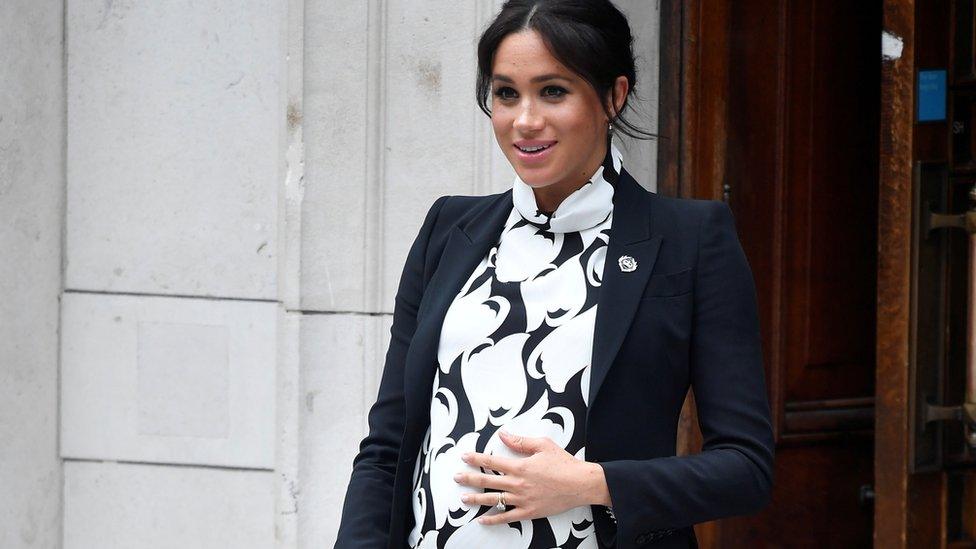
Prior to the newest royal's arrival, Kensington Palace said the Duke and Duchess of Sussex took a "personal decision to keep the plans around the arrival of their baby private".
But there was speculation Meghan would follow in the Queen's footsteps by having a home birth for her baby.
And announcing the birth of the couple's first child - a boy - on 6 May, Prince Harry spoke to the press outside the couple's home in Windsor, Frogmore Cottage, suggesting she had indeed opted for a home birth.
So, what exactly does that involve?
Catherine Tyler Prady, 45, chose a home birth for her second and third children, after a bad experience giving birth to her first child in hospital.
She describes her first experience of labour - which lasted 24 hours - as "horrible".
"I was absolutely exhausted and the doctors were saying 'if you don't get this done now we're going to get the forceps out'," she says. "It was a really stressful environment."

Catherine with two of her children, Milo and Poppy
Practical considerations also played a role in her decision.
"At the time we lived in rural Lincolnshire and didn't have family or close friends we could call on to look after our eldest if I went into labour in the middle of the night," she says.
"As it happened they were both very quick and my daughter may well have been born en route, if I'd set out for the hospital when things got going!"
She admits her second home birth was "a bit hairy", because the midwife arrived only just in time to deliver her daughter, but overall she found the experience more relaxing than being in hospital.
"It was lovely to be at home in my own space, without the noise and bustle of a hospital," she says.
"My older kids were happily watching TV in the other room and I had my own bath and comfy bed to get into afterwards."
Despite doing her own research to weigh up the risks of home births against hospital births, Catherine says she still had some concerns.
"There was always a feeling that if anything went wrong, I would be blamed, by family, friends and medical professionals alike, whereas with a hospital birth, it's accepted that things don't always go to plan," she says.
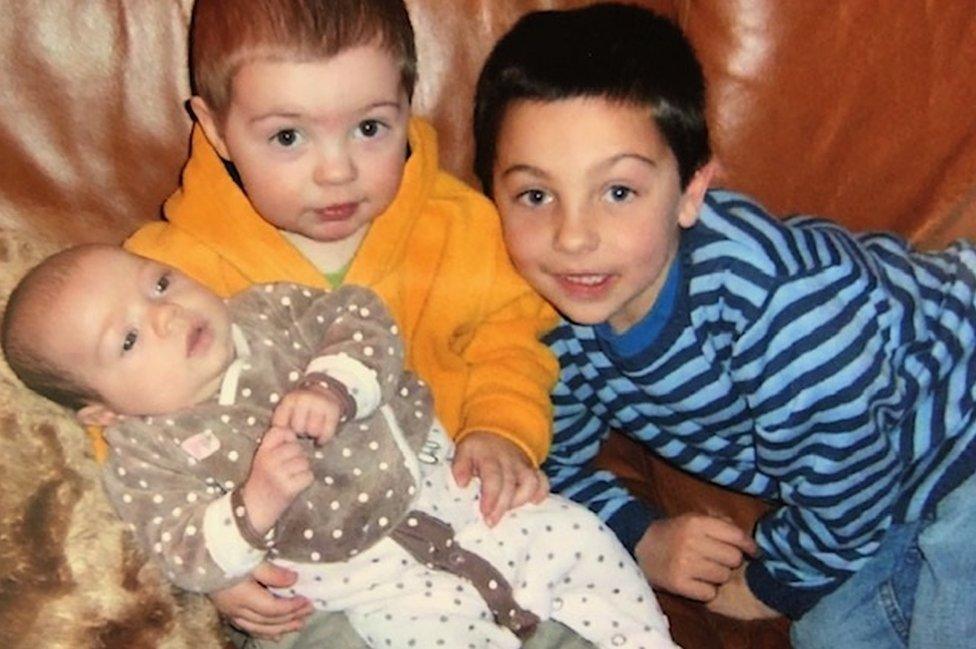
Catherine's two elder children were both at home when she gave birth to her daughter
The latest NHS guidelines, external say that for low-risk pregnancies, giving birth is generally very safe wherever it happens, and women should be free to choose the environment in which they feel most comfortable.
A 2011 study found that for women giving birth for the second time, there was no difference in risk to the baby between a home birth and one in a doctor-led hospital unit.
It found that home births carry a slightly higher risk for babies of first-time mothers, but the chance of harm to the baby was still under 1%.
For women at risk of complications, giving birth in hospital, where specialists are available, may be more suitable. Some procedures like caesarean sections can also only be carried out in hospital.
Factors which increase the risk of complications during pregnancy include obesity, being over 35, high blood pressure, heart disease or foetal abnormalities.
Home births are not judged to be appropriate for all women, who should make their decision based on advice from a healthcare professional.
However, Mandy Forrester, head of quality and standards at the Royal College of Midwives, says ultimately it is down to a woman's personal choice.
"Home births are probably more suitable for women at low risk of complications and who maybe have had a normal birth before, but a lot of first-time mums do opt for a home birth," she says.
A home birth is typically planned with a community midwife, and when a woman goes into labour she can call for a midwife to come to her home.
Epidurals are not available at home but gas and air, a warm bath or a birth pool can be used for pain relief.
Sam Todd, who leads the homebirth team at Birmingham Women's and Children's NHS Foundation Trust, says the main advantage of a home birth is that women may feel more comfortable.
"When women are in their home they are more likely to be relaxed and calm because they're in familiar surroundings," he says.
It also means women do not have to leave behind their other children or interrupt their labour to go into hospital.
However, he says women should consider that they may need to be transferred to hospital in the case of any complications.
Ms Forrester also stresses that midwives are trained to detect any signs that a doctor is needed.
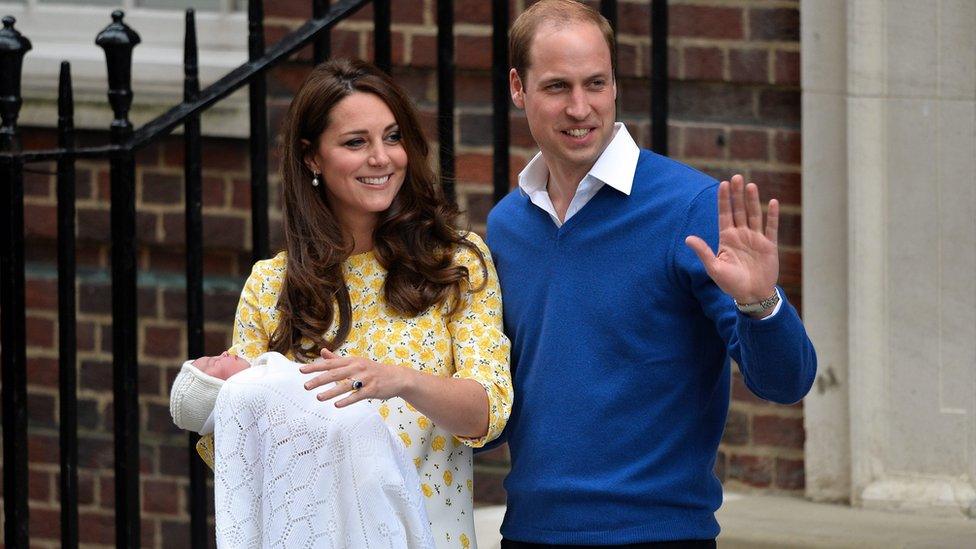
The Duchess of Cambridge gave birth to all three of her children in the private Lindo Wing of St Mary's Hospital in west London
While the Queen had all of her four children at either Buckingham Palace or Clarence House, the number of home births in the UK has declined dramatically over the past 50 years.
In England and Wales only 2.1% of women gave birth at home in 2017, according to the Office for National Statistics, external. In Scotland, external the figure was 2%, while in Northern Ireland, external it was 0.4%.
Mr Todd says the discussion of home births prompted by the speculation over Meghan's plans can only be positive for raising awareness of the different options available for women.
"It's not that she would be doing anything new or wacky," he says. "It's about respecting a woman's choice."
- Published15 October 2018

- Published24 April 2018
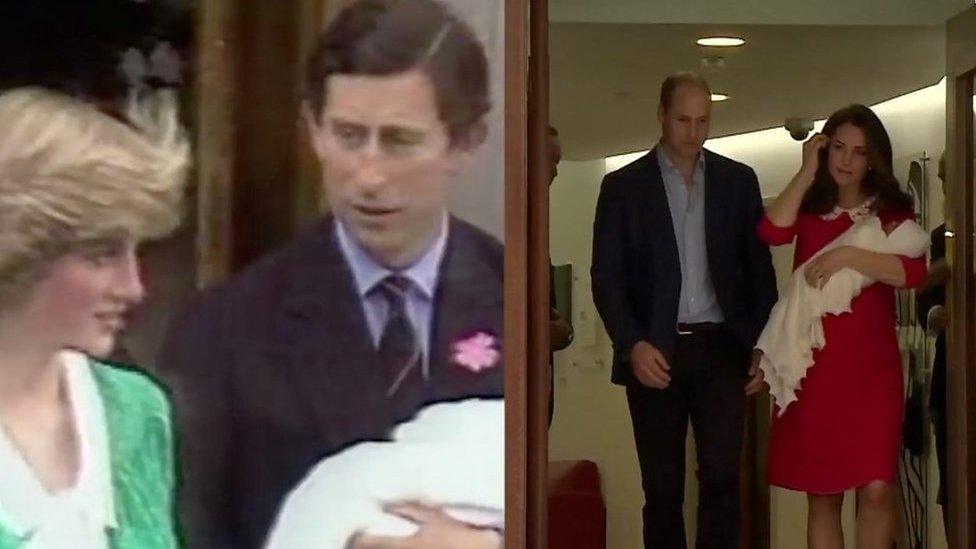
- Published3 December 2014
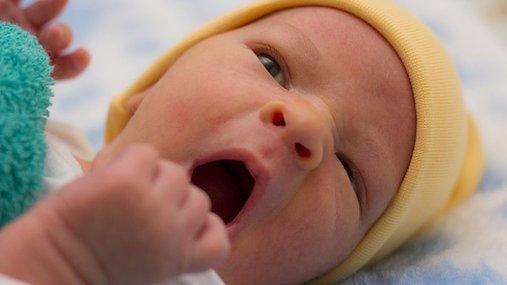
- Published25 November 2011
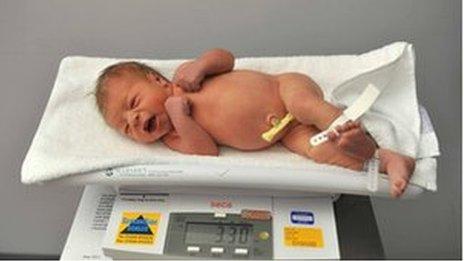
- Published6 June 2021
